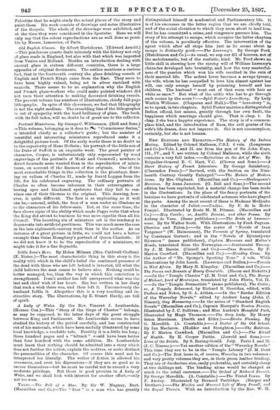Portrait Miniatures. By George C. Williamson. (Bell and Sons.) —This
volume, belonging as it does to "Connoisseur Series," is intended chiefly as a collector's guide ; but the number of beautiful and interesting miniatures reproduced make it a delightful picture-book. Of the early works there is no doubt as to the superiority of Hans Holbein ; his portrait of the little son of the Duke of Suffolk is an exquisite work. The great painter of character, Cooper, is unfortunately only represented by wood engravings of the portraits of Monk and Cromwell ; nowhere is direct facsimile more wanted than in the reproduction of minia- tures, on account of the fineness of the originals. One of the most remarkable things in the collection is the plumbago draw- ing on vellum of Charles II., made by David Leggett from the life, for his celebrated engraving. The ordinary portraits of Charles so often become inhuman in their extravagance of leering eyes and blackened eyebrows that they fail to con- vince one of their likeness to the original. This drawing, how- ever, is quite different. The face is as unpleasing as it well can be,—sensual, selfish, the face of a man under no illusions as to the characters of his fellow-men. But, at the same time, the face shows signs of the ability which made Pepys write that when the King did attend to business he was more capable than all his Council. The besetting sin of miniature art is the tendency to degenerate into artificial prettiness. This was much more the case in the late eighteenth-century work than in the earlier. As an instance of a great picture in little, we could not have a better example than Ozias Humphrey's portrait of Queen Charlotte. If we did not know it to be the reproduction of a miniature, we might take it for a fine Reynolds.


































 Previous page
Previous page